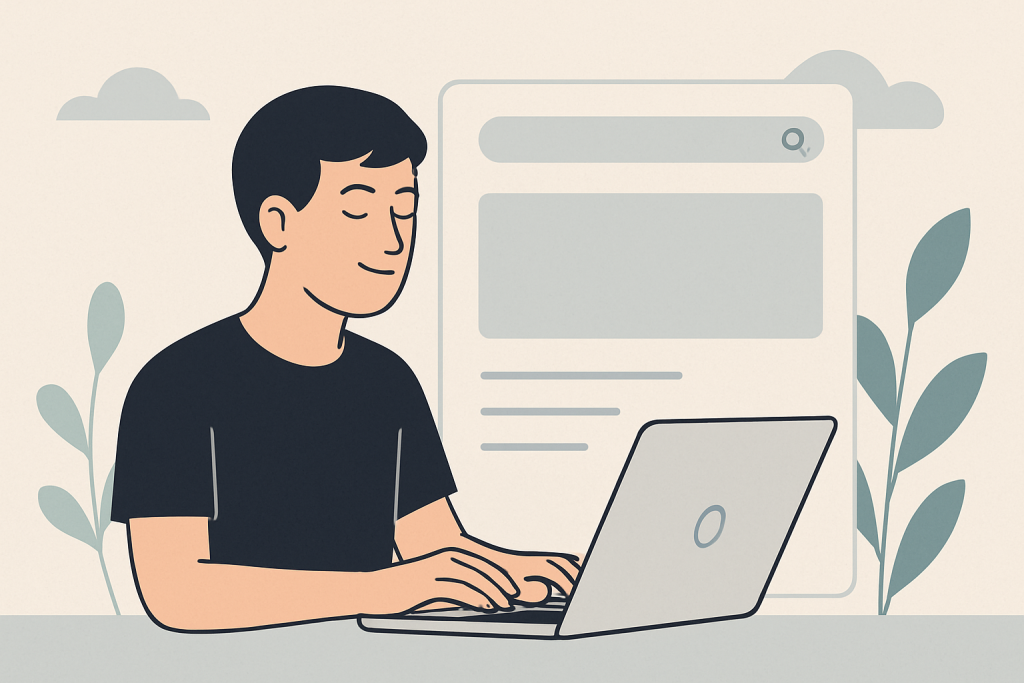In a digital world overflowing with notifications, pop-ups, autoplay videos, and cluttered interfaces, users are increasingly seeking a sense of calm. That’s where the concept of quiet spaces in digital design comes in—an emerging design approach that prioritizes simplicity, breathing room, and cognitive ease.
Originally rooted in architecture and interior design, “quiet spaces” have found new relevance in user interface (UI) and user experience (UX) design. Designers are now exploring how to build digital environments that allow users to focus, reflect, and interact more intentionally, without unnecessary noise.
This article explores how the trend is evolving, why it matters now, and how digital teams are implementing it across platforms—from productivity apps to websites and operating systems.

Why “Quiet Spaces” Are Gaining Momentum
The surge of interest in quiet design elements isn’t happening in a vacuum. It’s a reaction to real user fatigue caused by overstimulation in digital environments.
Key drivers behind the shift:
- Information overload: With thousands of inputs per day, users are overwhelmed by cluttered designs and dense navigation.
- Digital well-being: Increasing concerns over screen time and mental health are forcing tech companies to rethink their interfaces.
- Productivity focus: Distraction-heavy environments are being replaced with tools that support deep work and mindful engagement.
Major companies like Apple, Google, and Notion have started to reframe digital engagement by removing friction and offering visual and cognitive breathing room.
Defining Quiet Spaces in Digital Design
Quiet spaces in digital interfaces aren’t necessarily blank—it’s not about “doing less” for its own sake. Instead, it’s about intentionality.
Common elements of quiet digital design include:
- Ample white space to reduce visual noise
- Muted color palettes to calm the user’s senses
- Minimalist navigation that doesn’t overwhelm
- Delayed or optional animations to avoid distraction
- Thoughtful typography for easy reading and mental flow
The goal is to help users stay present and engaged, rather than reacting to every digital stimulus.
Real-World Examples: Who’s Doing It Right?
Several platforms have gained traction by incorporating quiet spaces in their UX strategies.
1. Notion
Notion’s entire philosophy is built around digital calm. The interface uses monochrome tones, minimal sidebars, and whitespace to encourage intentional productivity.
2. Apple’s Focus Mode
Apple’s iOS Focus Mode limits notifications and changes the interface based on user context. It’s a systemic way to build quiet into user experiences across devices.
3. Headspace and Calm
While obvious examples in the mental health space, these apps are instructive in how they present content. Soft edges, silent transitions, and sparse text all reduce user strain.
4. Medium
The reading platform strips away sidebars, intrusive ads, and animation—putting the spotlight entirely on the written word.
Designing for Digital Silence: Practical Strategies
If you’re a product manager, UX designer, or developer, here’s how to start incorporating quiet spaces in your own digital experiences.
1. Start with User Intent
Ask: What does the user want to do here? Design only what helps them achieve that goal. Remove the rest.
2. Minimize Interaction Noise
- Limit haptic feedback, flashing alerts, and auto-playing media.
- Make error states soft and non-jarring.
3. Embrace Negative Space
Whitespace allows the brain to process information without friction. It also improves visual hierarchy.
4. Use Soft Visuals
Swap out aggressive colors with neutral tones. Choose typography that supports easy scanning and doesn’t demand effort.
5. Offer Control Over Notifications
Give users a say in what pops up—and when. Consider bundling non-essential alerts into digest summaries.
The Business Case for Quiet Design
This isn’t just about aesthetics. There’s data behind the movement toward quiet spaces in digital design:
- Reduced bounce rates: Cleaner, simpler sites reduce user fatigue, keeping people engaged longer.
- Higher conversion: Clear CTAs placed in distraction-free environments tend to outperform.
- Improved accessibility: Simplified designs help users with cognitive impairments, attention challenges, and neurodivergent needs.
A 2023 Nielsen Norman Group report found that minimal interfaces scored 20–30% higher in usability metrics than busy, feature-dense alternatives (source).
Challenges and Limitations
While promising, quiet design isn’t always the right approach.
- E-commerce sites may struggle with balancing sales urgency and simplicity.
- Social media thrives on continuous feedback loops and engagement hooks.
- Enterprise tools often need feature-rich environments, requiring thoughtful layering rather than stripping away complexity.
Quiet spaces aren’t about doing less—they’re about doing what’s necessary in a less intrusive way.
What’s Next: A Shift Toward Ambient Computing
Quiet design is a stepping stone toward ambient computing, where technology fades into the background and supports human needs without shouting for attention.
Voice assistants, context-aware notifications, and emotion-sensitive interfaces will play a bigger role in shaping a future where digital still exists—just not so loudly.
Companies are already researching how to design interfaces that feel like background companions rather than attention magnets. This could redefine digital presence entirely.
Conclusion
As users demand more mindful digital experiences, the shift toward quiet spaces in digital design reflects a larger cultural pivot: from constant engagement to conscious interaction.
By prioritizing focus, clarity, and intention, this approach challenges traditional UX strategies built on alerts, animations, and infinite scrolls. The future isn’t silent—but it might be quieter, and better for it.
References
- Nielsen Norman Group. “The Impact of Simplicity in User Interface Design.” https://www.nngroup.com/articles/
- Medium. “Designing Calm Technology.” https://medium.com
- Apple. “Focus Mode Overview.” https://support.apple.com/en-us/HT212608
- Notion Blog. “Design Philosophy: Calm by Default.” https://www.notion.so/blog
- MIT Technology Review. “Ambient Computing and the Future of UX.” https://www.technologyreview.com/





